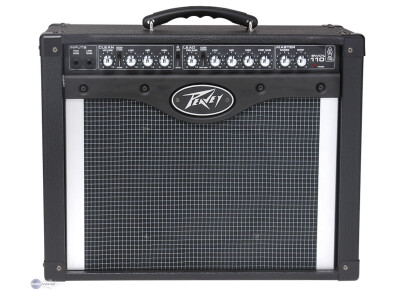Tech. sheet
- Manufacturer: Peavey
- Model: Envoy 110
- Series: TransTube
- Category: Solid-State Combo Guitar Amps
- Other names:envoy110
We have no technical specifications for this product
but your help will be much welcomed
»
User reviews
4.3/5(3 reviews)
5
67 %
4
3
33 %
2
1
Good for the money
Published on 06/01/11 at 15:04For a decent practice amp this one isn't that bad for the money. It has two channels with independent EQing controls and different boosts and voicing switches. This sin not a stage amp nor an amp that you would record with. However, this is a nice little amp for those needing to practice and don't want to bust out a huge stack at home.
Peavey Envoy 110 Features:
40 watts (rms)
10-inch super-duty Blue Marvel® speaker
Two footswitchable channels clean and lead
3-band EQ per channel
Headphone jack
Modern/vintage voicing switch on clean channel
Footswitchable reverb with level control
High gain/modern/vintage voicing switch on lead channel
High and low...…
Peavey Envoy 110 Features:
40 watts (rms)
10-inch super-duty Blue Marvel® speaker
Two footswitchable channels clean and lead
3-band EQ per channel
Headphone jack
Modern/vintage voicing switch on clean channel
Footswitchable reverb with level control
High gain/modern/vintage voicing switch on lead channel
High and low...…
Read more
For a decent practice amp this one isn't that bad for the money. It has two channels with independent EQing controls and different boosts and voicing switches. This sin not a stage amp nor an amp that you would record with. However, this is a nice little amp for those needing to practice and don't want to bust out a huge stack at home.
Peavey Envoy 110 Features:
40 watts (rms)
10-inch super-duty Blue Marvel® speaker
Two footswitchable channels clean and lead
3-band EQ per channel
Headphone jack
Modern/vintage voicing switch on clean channel
Footswitchable reverb with level control
High gain/modern/vintage voicing switch on lead channel
High and low gain inputs
UTILIZATION
Details
Type Solid State
Number of Channels 2
Power 40W
Speakers 1 x 10" Blue Marvel
No Effects
Reverb Yes
EQ Low, Mid, High
No Amp Modeling
Preamp Tubes No Tubes
Power Tubes No Tubes
Inputs 2 x Instrument
Outputs 1 x Headphone (1/4"), 1 x Speaker Simulated Direct Output (1/4")
Footswitch I/O
No Effects Loop
Height 17"
Width 19.375"
Depth 9.25"
Weight 24.5 lbs.
SOUNDS
The sound is solid state so it will sound nasally and sterile but not that you are necessarily looking for world class tone in this amp. I like all Peavey's with a humbucker style pickup in the guitar of choice. The clean channel isn't to bad and sounds pretty decent. I actually like solid state clean tones sometimes better than tube cleans. The distortion channel have a nice grind for high gain purposes and
OVERALL OPINION
For the money this is a nice amp for those needing to get started playing the electric guitar or those needing a sweet practice amp and don't want to break the bank. At new these amps come in at around $230, which is a great price for a good sounding combo.
I would recommend playing this first to see if Peavey solid state voicing is up your alley. These are different then say a Fender, Marshall, or Mesa Boogie.
Peavey Envoy 110 Features:
40 watts (rms)
10-inch super-duty Blue Marvel® speaker
Two footswitchable channels clean and lead
3-band EQ per channel
Headphone jack
Modern/vintage voicing switch on clean channel
Footswitchable reverb with level control
High gain/modern/vintage voicing switch on lead channel
High and low gain inputs
UTILIZATION
Details
Type Solid State
Number of Channels 2
Power 40W
Speakers 1 x 10" Blue Marvel
No Effects
Reverb Yes
EQ Low, Mid, High
No Amp Modeling
Preamp Tubes No Tubes
Power Tubes No Tubes
Inputs 2 x Instrument
Outputs 1 x Headphone (1/4"), 1 x Speaker Simulated Direct Output (1/4")
Footswitch I/O
No Effects Loop
Height 17"
Width 19.375"
Depth 9.25"
Weight 24.5 lbs.
SOUNDS
The sound is solid state so it will sound nasally and sterile but not that you are necessarily looking for world class tone in this amp. I like all Peavey's with a humbucker style pickup in the guitar of choice. The clean channel isn't to bad and sounds pretty decent. I actually like solid state clean tones sometimes better than tube cleans. The distortion channel have a nice grind for high gain purposes and
OVERALL OPINION
For the money this is a nice amp for those needing to get started playing the electric guitar or those needing a sweet practice amp and don't want to break the bank. At new these amps come in at around $230, which is a great price for a good sounding combo.
I would recommend playing this first to see if Peavey solid state voicing is up your alley. These are different then say a Fender, Marshall, or Mesa Boogie.
See less
01
»
Published on 11/06/08 at 10:17
(Originally written by pseudo.nyme/translated from Audiofanzine FR)
- Amplification technology (tube, solid state, ...)?
Transistor amp with tube preamp simulation and power amp.
- Output power?
40 watts RMS (I've never turned the volume control over the center position using the high input!!!)
- Connections?
High and low level inputs
Recording output with dedicated level control
Headphone output
Footswitch to control the boost function and the channel selection.
- Controls, effects, etc.?
2-channel preamp
Voicing selector Vintage/Classic/Warm on the clean channel.
Voicing selector Classic/Modern/High Gain on the lead channel.
Clean: Volume, Low, Mid, High.
Lead: Pre-gain, Low, Mid,...…
- Amplification technology (tube, solid state, ...)?
Transistor amp with tube preamp simulation and power amp.
- Output power?
40 watts RMS (I've never turned the volume control over the center position using the high input!!!)
- Connections?
High and low level inputs
Recording output with dedicated level control
Headphone output
Footswitch to control the boost function and the channel selection.
- Controls, effects, etc.?
2-channel preamp
Voicing selector Vintage/Classic/Warm on the clean channel.
Voicing selector Classic/Modern/High Gain on the lead channel.
Clean: Volume, Low, Mid, High.
Lead: Pre-gain, Low, Mid,...…
Read more
(Originally written by pseudo.nyme/translated from Audiofanzine FR)
- Amplification technology (tube, solid state, ...)?
Transistor amp with tube preamp simulation and power amp.
- Output power?
40 watts RMS (I've never turned the volume control over the center position using the high input!!!)
- Connections?
High and low level inputs
Recording output with dedicated level control
Headphone output
Footswitch to control the boost function and the channel selection.
- Controls, effects, etc.?
2-channel preamp
Voicing selector Vintage/Classic/Warm on the clean channel.
Voicing selector Classic/Modern/High Gain on the lead channel.
Clean: Volume, Low, Mid, High.
Lead: Pre-gain, Low, Mid, High, Post gain.
Reverb
Boost
In short: quite comprehensive!
UTILIZATION
- What about its settings?
Easy and quite effective!
- Is it easy to get the right sound?
Just plug in and you'll immediately have a good tone!
Very important: I was searching for a light and compact amp which could provide enough gain and volume to play in a band, and I'm pretty satisfied!
SOUNDS
- Does it fit your music style?
Yes and furthermore it's quite versatile!
- Which guitar, bass or effects do you use?
PRS Se and SG Faded. A noise gate isn't necessary... Effects are pretty good.
- What kind of sounds do you get and which settings do you use ("crystal-clear", "fat", ...)?
My opinion with a flat EQ setting:
Clean channel first:
*vintage: the sound is quite brilliant and present. Perfect for funk or ska.
*classic: well-rounded, fat sound with a big low end, but not quite excessive! Always very clean and warm, respecting the guitar's own character...
*Warm: Same sound with a little bit more gain and lows, ideal for jazz.
Lead channel:
*classic: Marshall Plexi-like sound with limited gain. Great for rock rhythm guitar! AC/DC power!!
*Moderne: High-gain sound �a Mesa Rectifier! Unreal gain reserves, perfect for heavy metal!
*High gain: Just like the classic channel but with an atypical character yielding a bigger sound. Say hello to Marshall JCM!
All voicing types are very good and the tube simulation is convincing.
No comments about the reverb... it's a reverb! I haven't tested the boost function nor the recording output yet.
OVERALL OPINION
- How long have you been using it?
I bought it just now!
- Which feature do you like the most / the least?
Pros: output power, weight (22 lb.) and size, sound, versatility, and also that it seems to be quite rugged.
Cons: no master control, no effect loop, no speaker output... but I don't need them! Otherwise the Bandit 112 offers all those features!
- Did you try any other models before buying it?
Yes indeed! I already owned:
- Randall RG50TC: Awesome distortion sound!! But too much noise, too heavy, too bulky and mediocre clean sound.
- Tiny Terror: Very good but no clean channel.
I tested:
- Vox Valtronix: Not bad but the sound isn't "pure" enough for my taste!
- Line 6 Spider Valve: not bad but its sound is too artificial for my taste and it's too complicated!
- Super Champ XD: Good but not conceived for distortion sounds!
- Peavey Classic 30: Good... sometimes really good, but it doesn't have enough gain and its clean sounds are too harsh.
- Marshall JCM 401: Heavy and with poor output power compared to amp head models!
- Roland Cube 60: Simulation sounds too synthetic.
- Fender 212 Frontman: Nice but it's not what I'm looking for.
- How would you rate its value for money?
Considering the great tube simulation, the effective settings and the versatility (you can use it for rehearsal or on stage, it's WELL WORTH the money!
Based on your experience, would you buy this product again?
Yes, unless I had enough money to buy a Mesa :p
- Amplification technology (tube, solid state, ...)?
Transistor amp with tube preamp simulation and power amp.
- Output power?
40 watts RMS (I've never turned the volume control over the center position using the high input!!!)
- Connections?
High and low level inputs
Recording output with dedicated level control
Headphone output
Footswitch to control the boost function and the channel selection.
- Controls, effects, etc.?
2-channel preamp
Voicing selector Vintage/Classic/Warm on the clean channel.
Voicing selector Classic/Modern/High Gain on the lead channel.
Clean: Volume, Low, Mid, High.
Lead: Pre-gain, Low, Mid, High, Post gain.
Reverb
Boost
In short: quite comprehensive!
UTILIZATION
- What about its settings?
Easy and quite effective!
- Is it easy to get the right sound?
Just plug in and you'll immediately have a good tone!
Very important: I was searching for a light and compact amp which could provide enough gain and volume to play in a band, and I'm pretty satisfied!
SOUNDS
- Does it fit your music style?
Yes and furthermore it's quite versatile!
- Which guitar, bass or effects do you use?
PRS Se and SG Faded. A noise gate isn't necessary... Effects are pretty good.
- What kind of sounds do you get and which settings do you use ("crystal-clear", "fat", ...)?
My opinion with a flat EQ setting:
Clean channel first:
*vintage: the sound is quite brilliant and present. Perfect for funk or ska.
*classic: well-rounded, fat sound with a big low end, but not quite excessive! Always very clean and warm, respecting the guitar's own character...
*Warm: Same sound with a little bit more gain and lows, ideal for jazz.
Lead channel:
*classic: Marshall Plexi-like sound with limited gain. Great for rock rhythm guitar! AC/DC power!!
*Moderne: High-gain sound �a Mesa Rectifier! Unreal gain reserves, perfect for heavy metal!
*High gain: Just like the classic channel but with an atypical character yielding a bigger sound. Say hello to Marshall JCM!
All voicing types are very good and the tube simulation is convincing.
No comments about the reverb... it's a reverb! I haven't tested the boost function nor the recording output yet.
OVERALL OPINION
- How long have you been using it?
I bought it just now!
- Which feature do you like the most / the least?
Pros: output power, weight (22 lb.) and size, sound, versatility, and also that it seems to be quite rugged.
Cons: no master control, no effect loop, no speaker output... but I don't need them! Otherwise the Bandit 112 offers all those features!
- Did you try any other models before buying it?
Yes indeed! I already owned:
- Randall RG50TC: Awesome distortion sound!! But too much noise, too heavy, too bulky and mediocre clean sound.
- Tiny Terror: Very good but no clean channel.
I tested:
- Vox Valtronix: Not bad but the sound isn't "pure" enough for my taste!
- Line 6 Spider Valve: not bad but its sound is too artificial for my taste and it's too complicated!
- Super Champ XD: Good but not conceived for distortion sounds!
- Peavey Classic 30: Good... sometimes really good, but it doesn't have enough gain and its clean sounds are too harsh.
- Marshall JCM 401: Heavy and with poor output power compared to amp head models!
- Roland Cube 60: Simulation sounds too synthetic.
- Fender 212 Frontman: Nice but it's not what I'm looking for.
- How would you rate its value for money?
Considering the great tube simulation, the effective settings and the versatility (you can use it for rehearsal or on stage, it's WELL WORTH the money!
Based on your experience, would you buy this product again?
Yes, unless I had enough money to buy a Mesa :p
See less
00
»
Published on 11/06/08 at 10:17 (This content has been automatically translated from French)
- What kind of amplification (lamp, transistor ,...)?
A transistor amplifier with a simulated pre-amplification and amplification tube.
- What is the power delivered?
40 Watts RMS (warning high on the entrance I've ever driven a more than half!
- What connection?
High and low inputs.
Output for direct recording without microphone with adjustable level.
Headphone output.
Boost and change the channel controlled by pedals.
- What are the settings, the effects? ...
2-channel preamp
Selector tonalitéVintage / Classic / Warm canal Clair.
Dial tone Classic / Modern / High Gain on the Lead channel.
Clean: Volume, Low, Mid, High;
Lead: Pre Gain, Low, Mid, High, Post...…
A transistor amplifier with a simulated pre-amplification and amplification tube.
- What is the power delivered?
40 Watts RMS (warning high on the entrance I've ever driven a more than half!
- What connection?
High and low inputs.
Output for direct recording without microphone with adjustable level.
Headphone output.
Boost and change the channel controlled by pedals.
- What are the settings, the effects? ...
2-channel preamp
Selector tonalitéVintage / Classic / Warm canal Clair.
Dial tone Classic / Modern / High Gain on the Lead channel.
Clean: Volume, Low, Mid, High;
Lead: Pre Gain, Low, Mid, High, Post...…
Read more
- What kind of amplification (lamp, transistor ,...)?
A transistor amplifier with a simulated pre-amplification and amplification tube.
- What is the power delivered?
40 Watts RMS (warning high on the entrance I've ever driven a more than half!
- What connection?
High and low inputs.
Output for direct recording without microphone with adjustable level.
Headphone output.
Boost and change the channel controlled by pedals.
- What are the settings, the effects? ...
2-channel preamp
Selector tonalitéVintage / Classic / Warm canal Clair.
Dial tone Classic / Modern / High Gain on the Lead channel.
Clean: Volume, Low, Mid, High;
Lead: Pre Gain, Low, Mid, High, Post gain;
Reverb
Boost
In short, very complete!
UTILIZATION
- The configuration is it simple?
Easy and very effective!
- Gets it easy to sound good?
One branch, and it sounds live!
Very important: I was looking for an amp compact enough, not super heavy and fairly balance the gain and volume for group play. Well, I'm thrilled!
SOUNDS
- Will it fit your style of music?
Yes, especially since it is quite versatile!
- With what (s) guitar (s) / low (s) or effect (s) do you play?
PRS Se and SG Faded. Not necessarily have to put a noise gate ... The effects go pretty well otherwise.
- What kind of sound you get and with what settings ("crystalline", "bold ",....)?
So my opinion will be on a test done with a flat EQ:
Clean channel first:
* Vintage: we get a sound enough lens, which is sharp enough thought has barely an "acoustic simulator" Perfect for funk, ska.
* Classic: a well loaded with fat, round bass without abusing either! always very clean with a real heat, which fully respect the grain of the guitar ...
* Warm: the same but with a little more gain and bass, great for jazz.
Lead channel:
* Classic sounds very marshall plexi with a gain limited to play the rhythmic many rock 'n' roll! AC / DC powaaa!
* Modern: Sounds very high gain, I would say mesa correct! and therefore gain a crazy and perfect for metal!
* High gain: the classic but with a channel gain much more unusual and much larger! (Marshall, therefore, if this coup jcm).
These three selections are all very successful and the simulation lamp and rather convincing.
The reverb is normal ... What a reverb! I have not tested the boost and direct out for recording.
OVERALL OPINION
- How long have you use it?
I just buy it!
- What is so special that you like most and least?
+: Power, weight (10kg) and size, sonnorité, versatility, and it looks pretty solid.
-: No master, no effects loop, no speaker output ... For my part, I do not need! and then the bandit 112 has it all!
- Have you tried many other models before buying it?
Oulala! I have owned:
randall rg50tc: distortion of ouff! breath too much, too heavy, too big and not super clean;
Tiny terror: very good but not 2em clean channel.
I tested:
Vox valtronix: not bad but not quite "pure" for my taste!
Line 6 Spider Valve: all quite light, but it's too good line 6 Down Pillow and too gadget!
Super Champ XD: not bad but not for the distortion!
Peavey Classic 30: Well ... even great but not enough to gain and too clean lens
Marshall jcm 401: heavy and not much spitting over heads!
roland cube 60: simulation too synthetic (I'm last?)
fender frontman 212: fun but it's not that I seek.
- How would you rate the quality / price?
To the extent that the simulation of lights is great, the settings are effective, it can be used in concert or repeated ... it costs only € 190 + € 20 for the footswitch and paid over € 600 for an amp, and yes the value for money is simply HUGE!
- With experience, you do again this choice? ...
With experience, I would do so, pending a mesa at 3000 €: p
A transistor amplifier with a simulated pre-amplification and amplification tube.
- What is the power delivered?
40 Watts RMS (warning high on the entrance I've ever driven a more than half!
- What connection?
High and low inputs.
Output for direct recording without microphone with adjustable level.
Headphone output.
Boost and change the channel controlled by pedals.
- What are the settings, the effects? ...
2-channel preamp
Selector tonalitéVintage / Classic / Warm canal Clair.
Dial tone Classic / Modern / High Gain on the Lead channel.
Clean: Volume, Low, Mid, High;
Lead: Pre Gain, Low, Mid, High, Post gain;
Reverb
Boost
In short, very complete!
UTILIZATION
- The configuration is it simple?
Easy and very effective!
- Gets it easy to sound good?
One branch, and it sounds live!
Very important: I was looking for an amp compact enough, not super heavy and fairly balance the gain and volume for group play. Well, I'm thrilled!
SOUNDS
- Will it fit your style of music?
Yes, especially since it is quite versatile!
- With what (s) guitar (s) / low (s) or effect (s) do you play?
PRS Se and SG Faded. Not necessarily have to put a noise gate ... The effects go pretty well otherwise.
- What kind of sound you get and with what settings ("crystalline", "bold ",....)?
So my opinion will be on a test done with a flat EQ:
Clean channel first:
* Vintage: we get a sound enough lens, which is sharp enough thought has barely an "acoustic simulator" Perfect for funk, ska.
* Classic: a well loaded with fat, round bass without abusing either! always very clean with a real heat, which fully respect the grain of the guitar ...
* Warm: the same but with a little more gain and bass, great for jazz.
Lead channel:
* Classic sounds very marshall plexi with a gain limited to play the rhythmic many rock 'n' roll! AC / DC powaaa!
* Modern: Sounds very high gain, I would say mesa correct! and therefore gain a crazy and perfect for metal!
* High gain: the classic but with a channel gain much more unusual and much larger! (Marshall, therefore, if this coup jcm).
These three selections are all very successful and the simulation lamp and rather convincing.
The reverb is normal ... What a reverb! I have not tested the boost and direct out for recording.
OVERALL OPINION
- How long have you use it?
I just buy it!
- What is so special that you like most and least?
+: Power, weight (10kg) and size, sonnorité, versatility, and it looks pretty solid.
-: No master, no effects loop, no speaker output ... For my part, I do not need! and then the bandit 112 has it all!
- Have you tried many other models before buying it?
Oulala! I have owned:
randall rg50tc: distortion of ouff! breath too much, too heavy, too big and not super clean;
Tiny terror: very good but not 2em clean channel.
I tested:
Vox valtronix: not bad but not quite "pure" for my taste!
Line 6 Spider Valve: all quite light, but it's too good line 6 Down Pillow and too gadget!
Super Champ XD: not bad but not for the distortion!
Peavey Classic 30: Well ... even great but not enough to gain and too clean lens
Marshall jcm 401: heavy and not much spitting over heads!
roland cube 60: simulation too synthetic (I'm last?)
fender frontman 212: fun but it's not that I seek.
- How would you rate the quality / price?
To the extent that the simulation of lights is great, the settings are effective, it can be used in concert or repeated ... it costs only € 190 + € 20 for the footswitch and paid over € 600 for an amp, and yes the value for money is simply HUGE!
- With experience, you do again this choice? ...
With experience, I would do so, pending a mesa at 3000 €: p
See less
50
»
Other Peavey solid-State Combo Guitar Amps
-
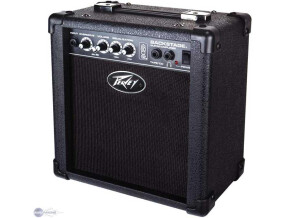
Backstage
Solid-State Combo Guitar Amp
-
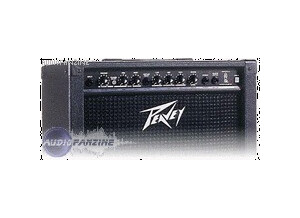
Audition 110
Solid-State Combo Guitar Amp
-
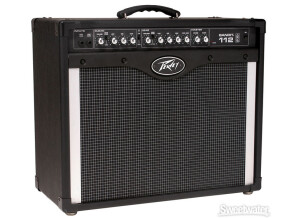
Bandit 112
Solid-State Combo Guitar Amp
$702 new (1 offer) -
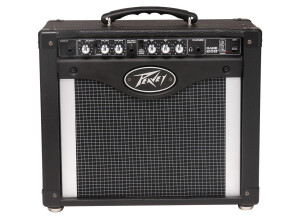
Rage 258
Solid-State Combo Guitar Amp
$206 new (1 offer) -
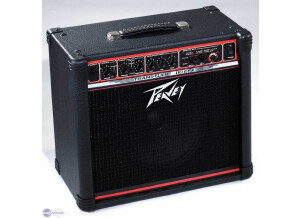
TransTube 110 EFX
Solid-State Combo Guitar Amp
-
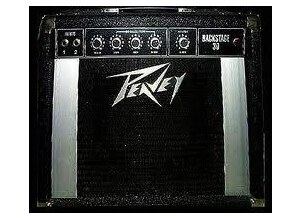
Backstage 30
Solid-State Combo Guitar Amp
-
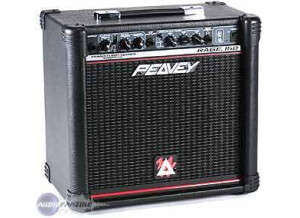
Rage 158
Solid-State Combo Guitar Amp
-
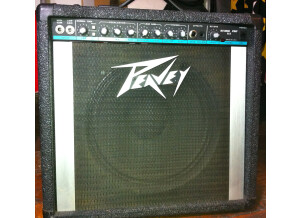
Studio Pro 112
Solid-State Combo Guitar Amp
-
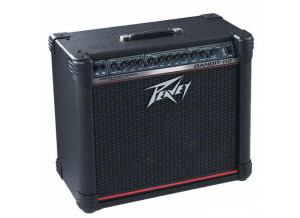
Bandit 112 II (Made in USA) (Discontinued)
Solid-State Combo Guitar Amp
-
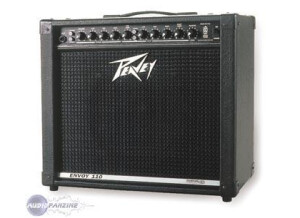
Envoy 110 (Discontinued)
Solid-State Combo Guitar Amp

